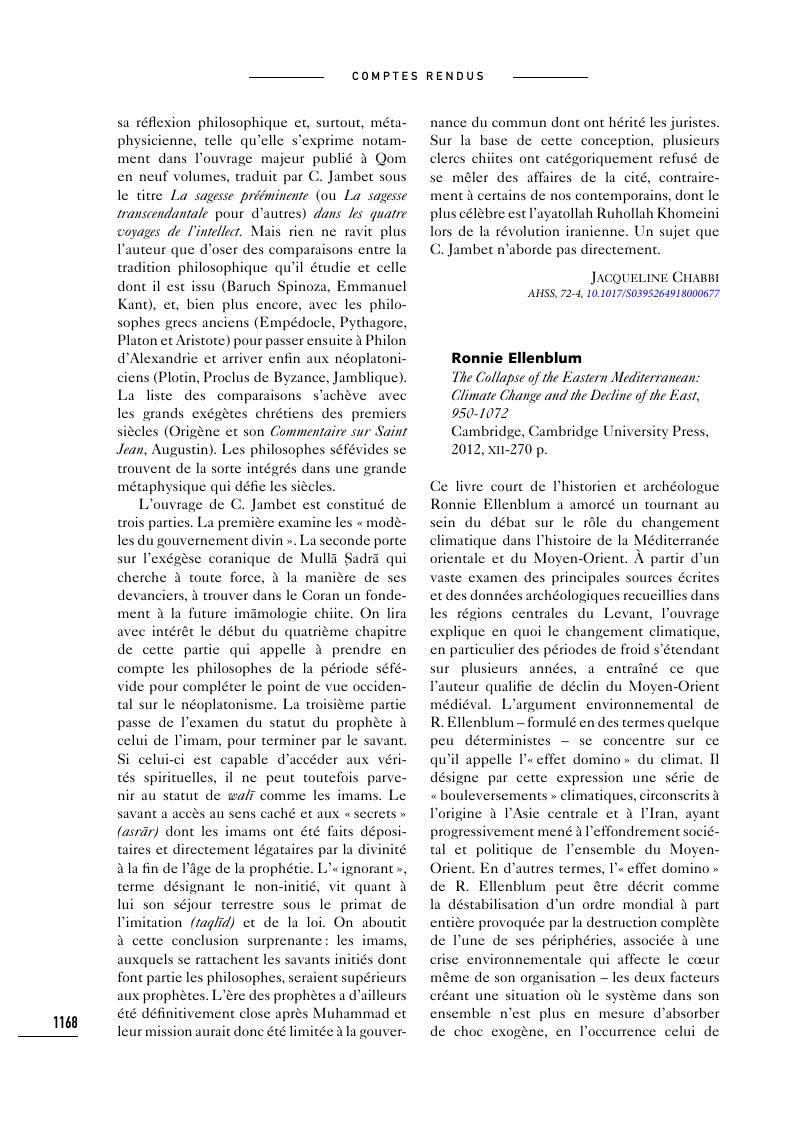Published online by Cambridge University Press: 11 September 2018

Traduction de Camille Richou
1 Richard W. Bulliet, Cotton, Climate, and Camels in Early Islamic Iran: A Moment in World History, New York, Columbia University Press, 2009.
2 Deborah G. Tor, « The Eclipse of Khurāsān in the Twelfth Century », Bulletin of the School of Oriental and African Studies, 81-2, 2018, p. 1-26.
3 Nicola Di Cosmo et al., « Environmental Stress and Steppe Nomads: Rethinking the History of the Uyghur Empire (744-840) with Paleoclimate Data », The Journal of Interdisciplinary History, 48-4, 2018, p. 439-463.
4 Comme le montre Johannes Preiser Kapeller dans son essai sur l'ouvrage de M. Ellenblum : « A Collapse of the Eastern Mediterranean ? New Results and Theories on the Interplay between Climate and Societies in Byzantium and the Near East, ca. 1000-1200 AD », Jahrbuch der Österreichischen Byzantinistik, 65, 2015, p. 195-242.